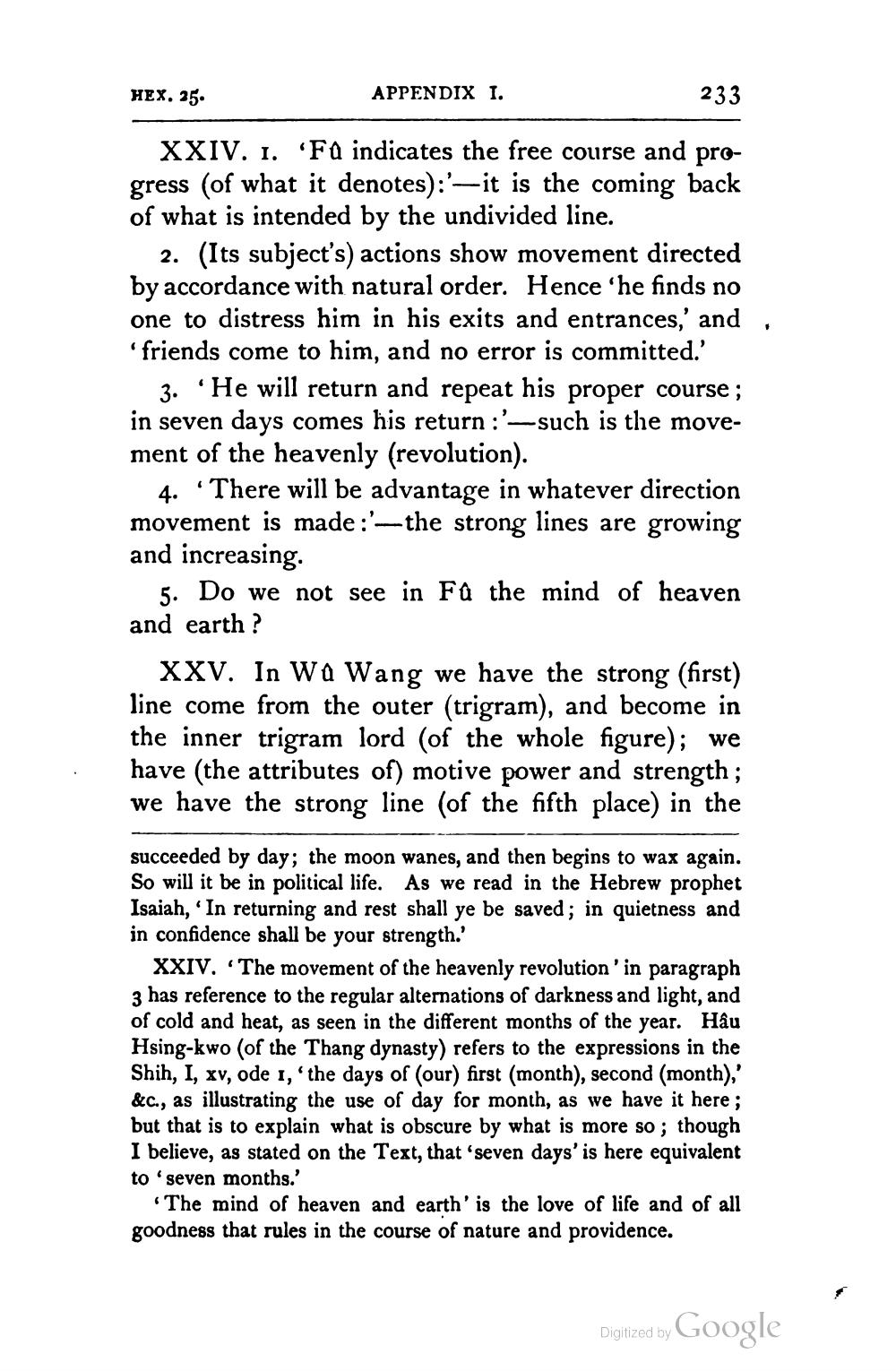________________
HEX. 35.
APPENDIX I.
233
XXIV. 1. 'Fà indicates the free course and progress (of what it denotes):'—it is the coming back of what is intended by the undivided line.
2. (Its subject's) actions show movement directed by accordance with natural order. Hence 'he finds no one to distress him in his exits and entrances,' and, 'friends come to him, and no error is committed.
3. 'He will return and repeat his proper course; in seven days comes his return :'-such is the movement of the heavenly (revolution).
4. “There will be advantage in whatever direction movement is made :'--the strong lines are growing and increasing.
5. Do we not see in Fa the mind of heaven and earth?
XXV. In Wa Wang we have the strong (first) line come from the outer (trigram), and become in the inner trigram lord (of the whole figure); we have (the attributes of) motive power and strength; we have the strong line (of the fifth place) in the
succeeded by day; the moon wanes, and then begins to wax again. So will it be in political life. As we read in the Hebrew prophet Isaiah, In returning and rest shall ye be saved ; in quietness and in confidence shall be your strength.'
XXIV. The movement of the heavenly revolution 'in paragraph 3 has reference to the regular alternations of darkness and light, and of cold and heat, as seen in the different months of the year. Hâu Hsing-kwo (of the Thang dynasty) refers to the expressions in the Shih, I, xv, ode 1, 'the days of (our) first (month), second (month),' &c., as illustrating the use of day for month, as we have it here; but that is to explain what is obscure by what is more so; though I believe, as stated on the Text, that'seven days' is here equivalent to 'seven months.
"The mind of heaven and earth' is the love of life and of all goodness that rules in the course of nature and providence.
Digitized by
Digitized by Google




